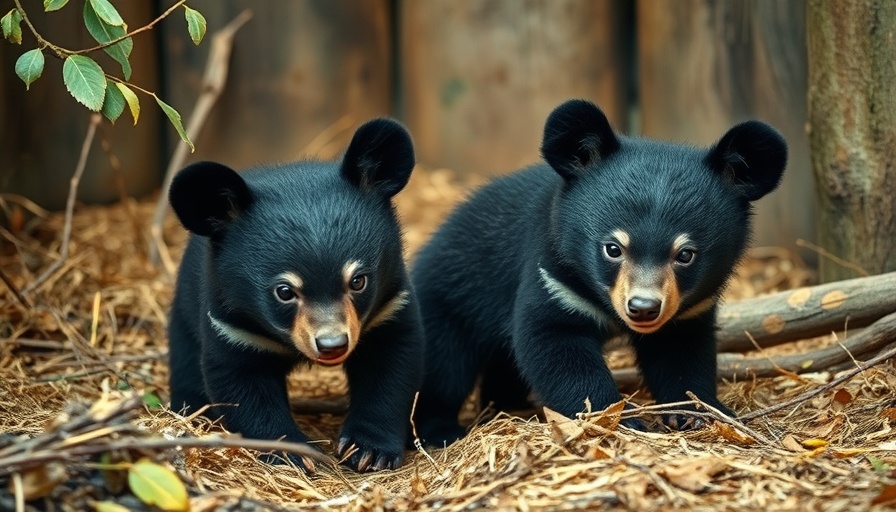
Baby Bears in Need: A Heartwarming Rescue Story
A pair of black bear cubs, two males and a female, have recently captured the hearts of many as they recuperate at the San Diego Humane Society’s Ramona Wildlife Center. Rescued from a Northern California neighborhood by wildlife officials after their mother was found missing, these young bears are receiving much-needed care and attention following a harrowing experience.
Why Care for Black Bear Cubs Matters
The situation surrounding these cubs highlights the importance of wildlife rescue and rehabilitation efforts. As urban areas expand, encounters between humans and wildlife, particularly orphaned young animals, become more frequent. Facilities like the one in San Diego play a crucial role in ensuring that these animals receive the help they need. Because of the limited space and resources at other wildlife rescues in California, the San Diego Humane Society stands out as one of the few equipped to handle the complex needs of black bear cubs.
Challenges Facing Orphaned Wildlife
Upon arrival at the rescue center, the cubs underwent thorough veterinary examinations, revealing both heartwarming and heartbreaking findings. While the two male cubs are on their path to recovery, the female cub faced significant health challenges, including a malformed shoulder and an embedded BB pellet. With the determination made by veterinarians that her quality of life would be severely compromised, the difficult decision for humane euthanasia was ultimately necessary. This illustrates the tough choices that wildlife caregivers must make, ensuring that animals do not suffer unnecessarily.
Steps Toward Rehabilitation and Release
The surviving cubs are now enjoying their time at a spacious outdoor enclosure designed to mimic their natural habitat as closely as possible. With no set timeline for their release back into the wild, the focus remains on providing them with the care and rehabilitation needed to thrive once they return to their natural environment. Autumn Welch, wildlife operations manager, emphasizes, "We are doing everything we can to give them the best possible shot at returning to their wild home.”
Community Impact and Awareness
The story of these bear cubs serves to engage the community and foster a deeper connection between residents and wildlife conservation efforts in California. For those in and around Bakersfield, it's a poignant reminder of the delicate balance between urban living and wildlife habitats. As local residents, individuals can play a role in preserving nature by educating themselves on the importance of wildlife rehabilitation and proper practices for coexisting with local fauna.
Future Predictions: A Path Forward for Wildlife Rehabilitation
As more urbanization occurs, freshwater basins and wildlife habitats are shrinking. This situation leads to increased instances of young animals like these cubs being abandoned or orphaned. Current predictions suggest a growing need for wildlife care facilities to accommodate the increasing rescue numbers. Initiatives targeting prevention, habitat preservation, and community engagement, can significantly reduce the instances of orphaned wildlife.
Tips for Supporting Wildlife Conservation
- Educate Yourself: Learn about local wildlife behaviors and how to promote a wildlife-friendly environment in your community.
- Get Involved: Volunteer at local wildlife rehabilitation centers or participate in conservation efforts.
- Spread Awareness: Share information about the importance of wildlife conservation and ways to help.
Conclusion
The journey of these young bear cubs adds to the narrative of wildlife resilience and the ongoing battle between urban development and nature. As their rehabilitation continues, their story can serve as a catalyst for awareness and action within the local community. Embracing these narratives not only benefits the animals involved but also enriches our understanding of coexistence with nature.
As we take steps toward a more sustainable future, remember, every effort counts. From spreading awareness to volunteering, there are numerous ways to support wildlife rehabilitation efforts. Join the mission for a healthier coexistence with nature.
 Add Row
Add Row  Add
Add 



Write A Comment